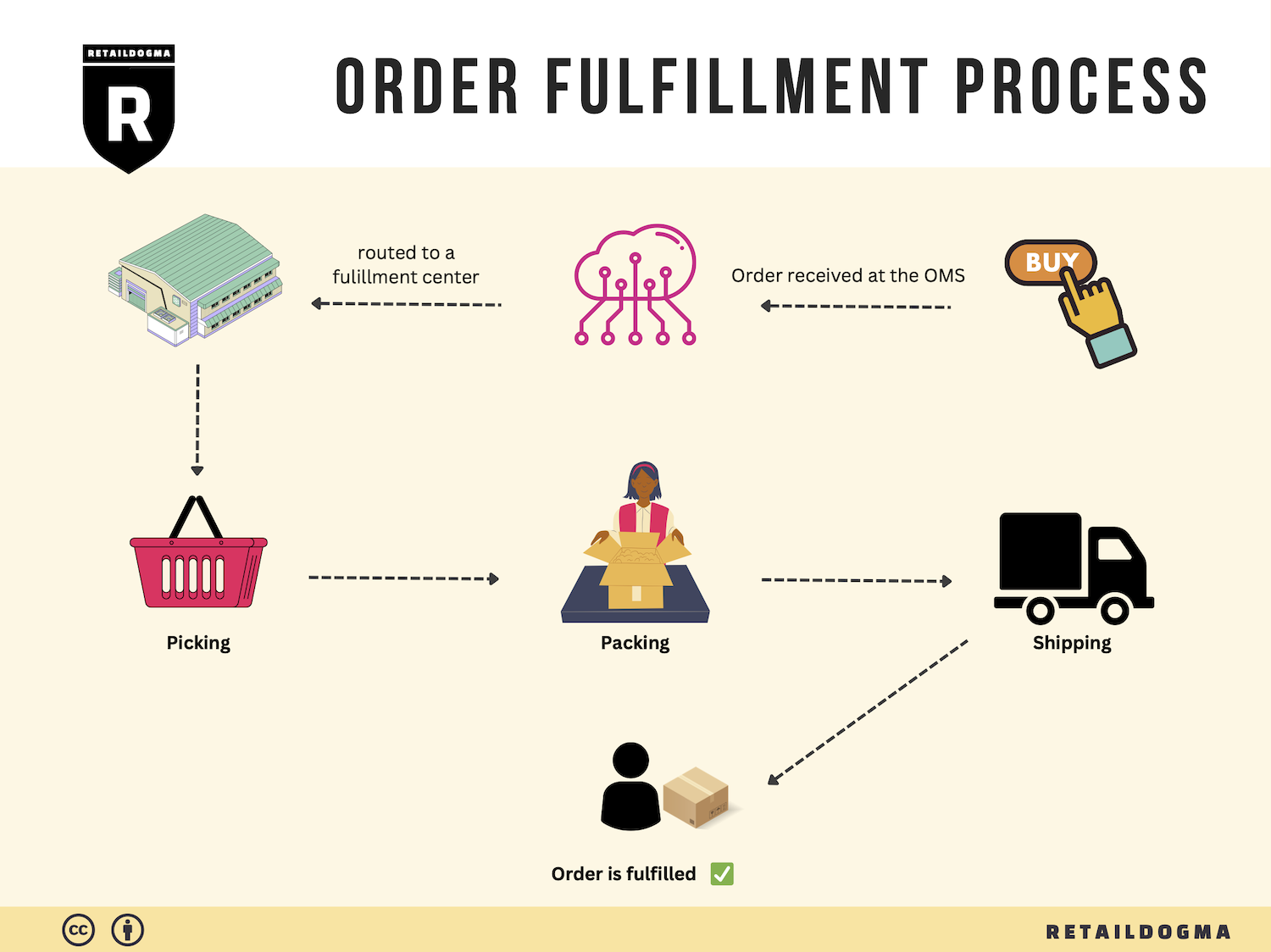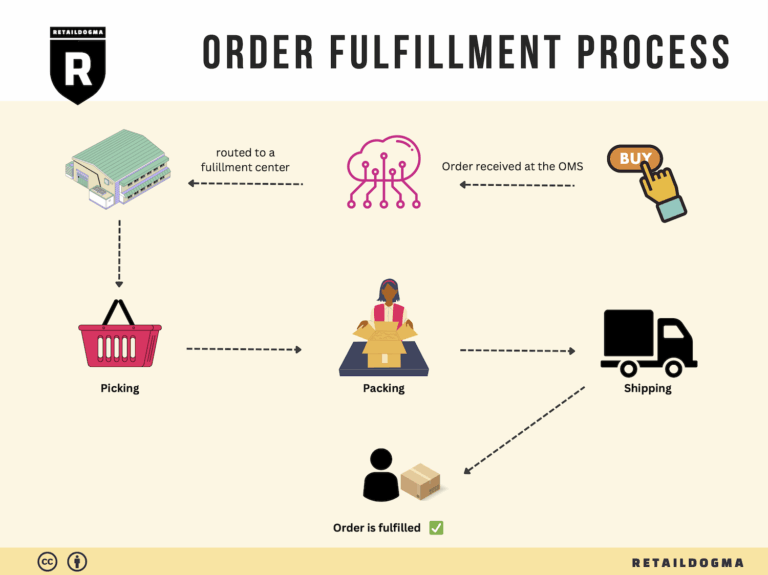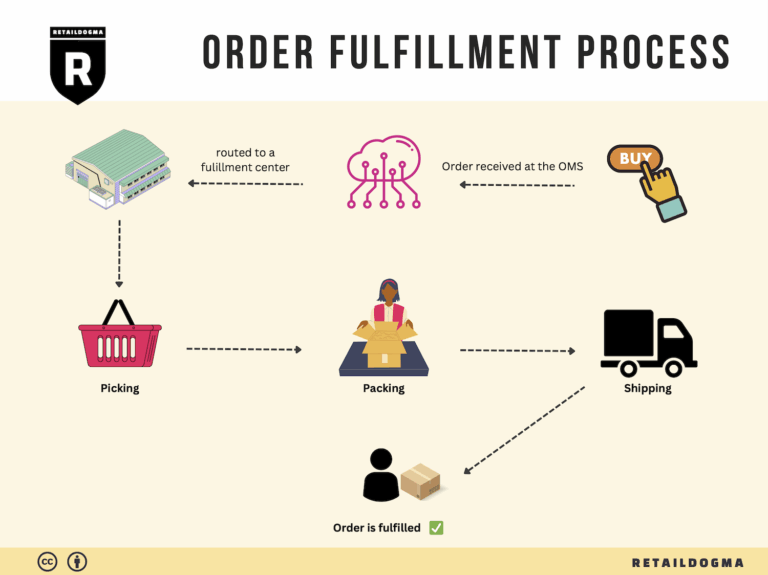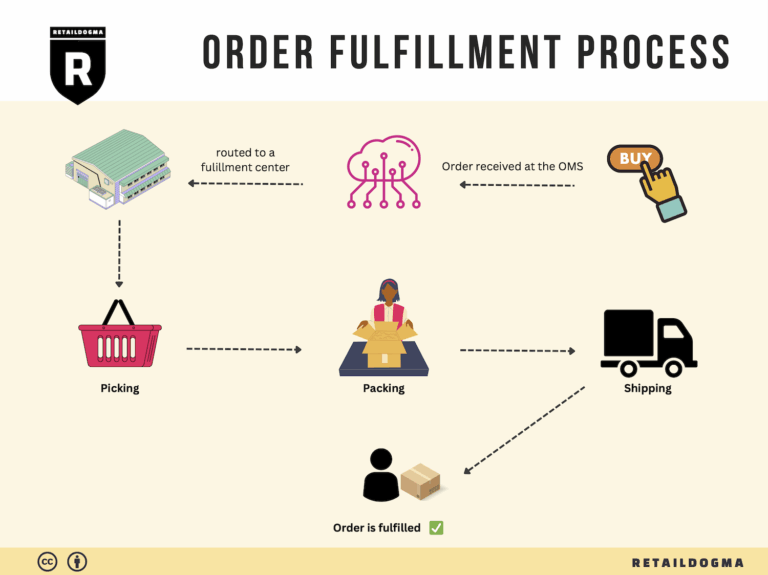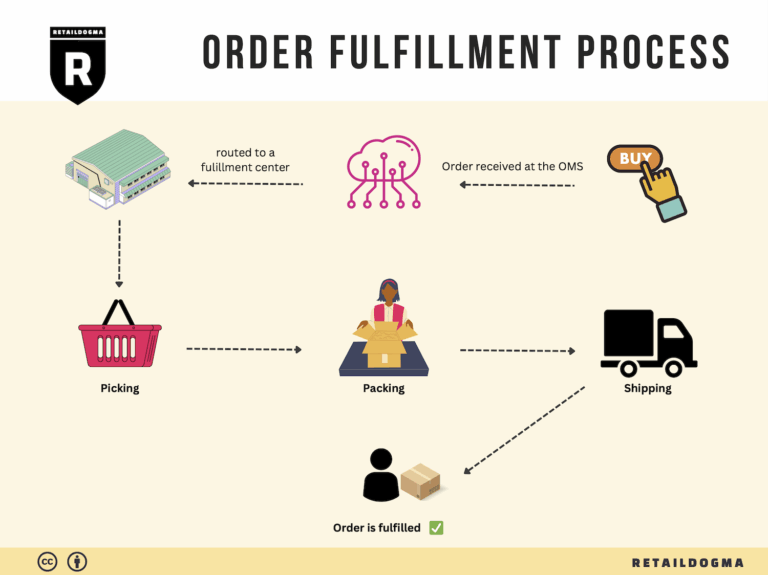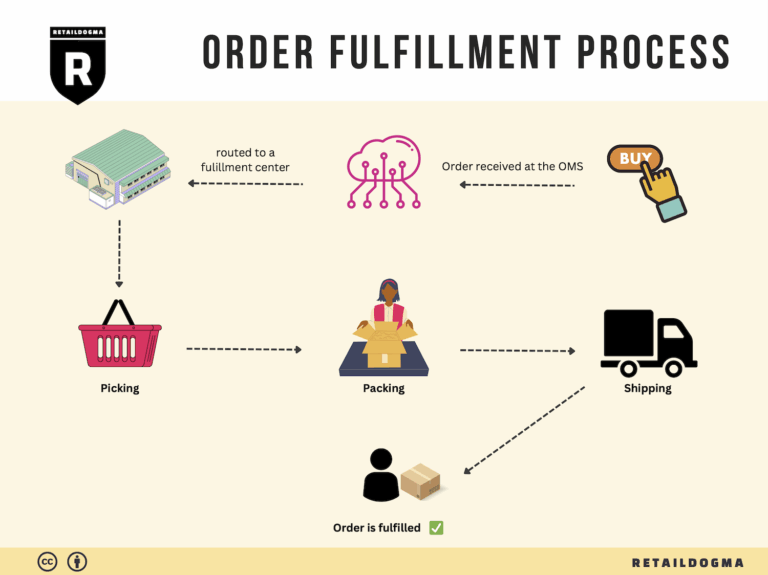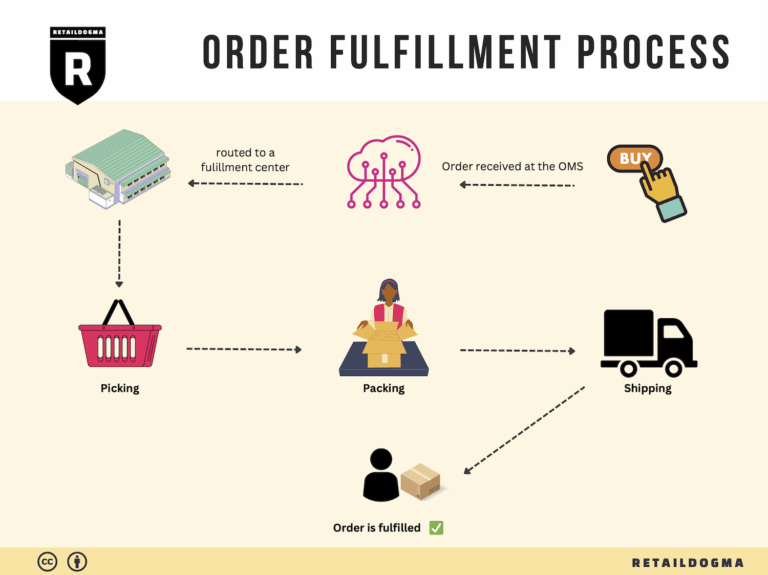How Order Fulfillment Works: A Step-by-Step Guide for Businesses
What is E-commerce Fulfillment? An Introduction for Growing Businesses
As your e-commerce business grows, so does the complexity of managing logistics. Many entrepreneurs quickly find themselves overwhelmed with the myriad tasks involved in packing and shipping orders, from inventory management to customer service. This chaos can detract from the core activities that fuel your business, such as product development and marketing.
Understanding Fulfillment
At its essence, fulfillment is the process of getting a product from your warehouse to your customer’s doorstep. It encompasses everything from inventory storage and order processing to packaging and shipping. A well-executed fulfillment strategy can enhance customer satisfaction, reduce operational headaches, and ultimately drive your business’s growth.
Models of Fulfillment
In today’s e-commerce landscape, there are several fulfillment models to consider. Third-Party Logistics (3PL) providers handle all aspects of logistics for you, including warehousing, packing, and shipping. Alternatively, Fulfillment by Amazon (FBA) allows you to leverage Amazon’s extensive fulfillment network, even if you sell on platforms outside of Amazon. In this guide, we will explore these models in detail, helping you understand the pros and cons of each.
Core Services
Fulfillment services typically include inventory management, order processing, packing, shipping, and returns handling. Understanding these core services is crucial for selecting the right fulfillment partner. Each service plays a significant role in ensuring that your customers receive their orders promptly and in good condition.
Choosing a Partner
Selecting the right fulfillment partner is a pivotal decision that can impact your business’s efficiency and customer satisfaction. This guide will provide practical advice on what to look for in a fulfillment partner, including technology integration, scalability, and cost-effectiveness.
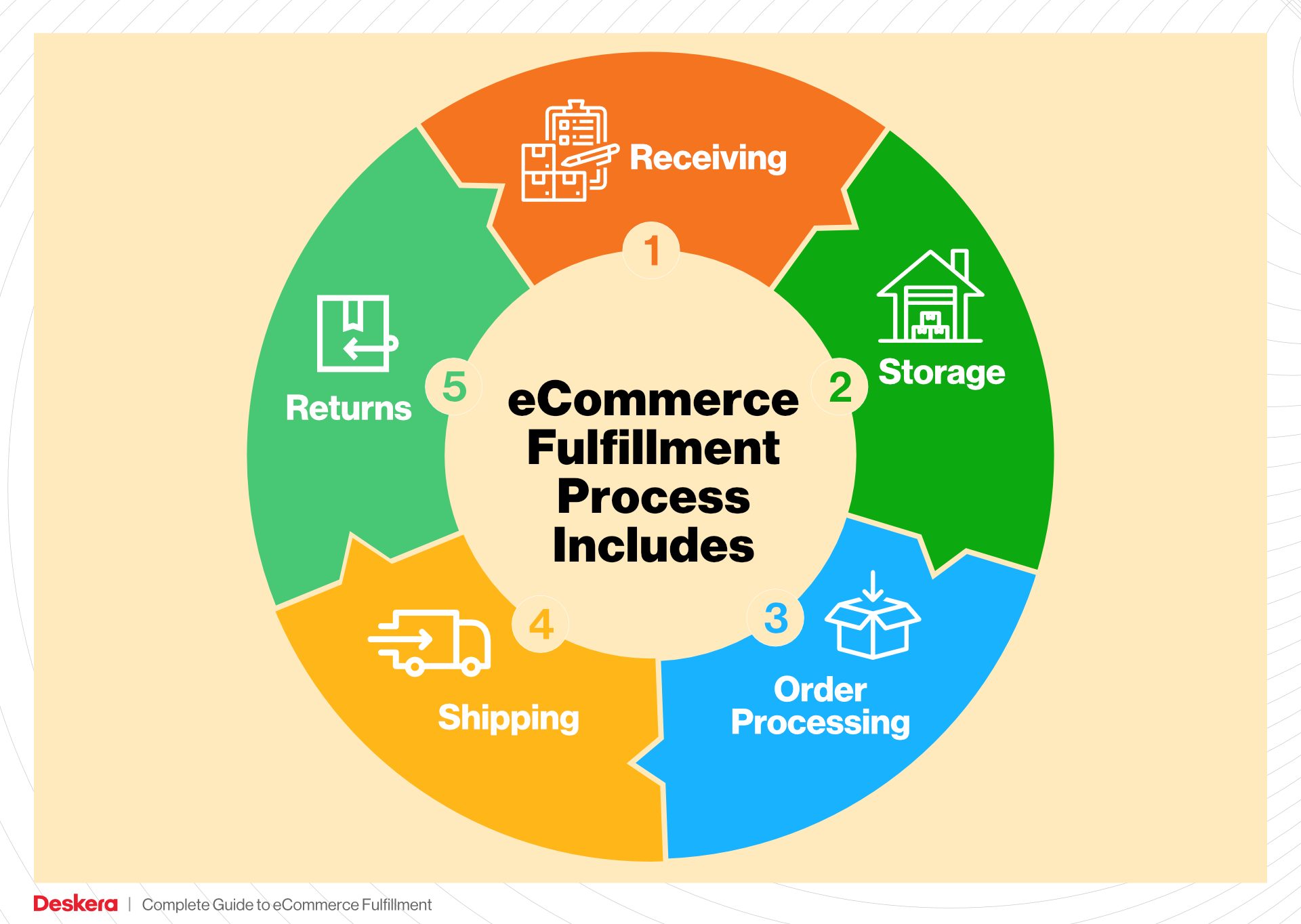
Pricing Insights
Cost is always a consideration in logistics. We’ll break down the various pricing structures associated with different fulfillment models, helping you to understand how to budget for these essential services. By comparing options like MCF (Multi-Channel Fulfillment) and traditional 3PL solutions, you can identify the most financially viable path for your business.
Empowering Your Business Decisions
The ultimate goal of this guide is to empower you to make informed decisions about your logistics strategy. With the right fulfillment partner and a well-structured process, you can streamline your operations, enhance customer satisfaction, and focus on what you do best—growing your business.
What You’ll Learn In This Guide
- What is E-commerce Fulfillment? An Introduction for Growing Businesses
- The Order Fulfillment Process: From ‘Buy’ Button to Customer’s Door
- Comparing Fulfillment Models: In-House vs. 3PL vs. Dropshipping
- A Deep Dive into Amazon FBA: Pros, Cons, and Who It’s For
- Core Services Offered by Fulfillment Centers
- How to Choose a Fulfillment Partner: A 6-Point Checklist
- Understanding Fulfillment Pricing: A Breakdown of Common Fees
- Frequently Asked Questions (FAQs) about Fulfillment
- Conclusion: Is Outsourcing Fulfillment the Right Move for Your Business?
- Important Disclaimer
The Order Fulfillment Process: From ‘Buy’ Button to Customer’s Door
1. Receiving Inventory
The order fulfillment process begins with receiving inventory from suppliers. This step involves checking in products and ensuring they match the purchase orders. Key actions include inspecting shipments for damage, verifying quantities, and assigning SKUs (Stock Keeping Units) to each item. SKUs are critical as they help in tracking inventory efficiently throughout the supply chain.
Receiving inventory accurately is paramount for maintaining stock levels and ensuring that the right products are available when orders come in. Any discrepancies at this stage can lead to stockouts or overstock situations, which can negatively impact customer satisfaction and operational efficiency. A robust receiving process minimizes errors and sets the foundation for effective inventory management.
2. Warehouse Storage
Once the inventory is received and verified, it is stored in a warehouse. This involves categorizing products based on size, type, and demand, which aids in optimizing storage space and facilitating easy access. Effective storage solutions, such as pallet racking or shelving systems, are essential for maximizing warehouse capacity.
Proper warehouse storage is vital because it influences the overall speed and efficiency of the fulfillment process. When items are stored logically and systematically, it reduces the time spent searching for products during order picking. Additionally, implementing inventory management software can enhance visibility into stock levels, enabling better forecasting and inventory turnover rates.
3. Order Picking
When a customer places an order, the next step is order picking. This process involves retrieving the correct items from the warehouse based on the order details. Order pickers typically use pick lists—documents that outline the items and quantities needed for each order. These lists help streamline the picking process and ensure accuracy.
Efficient order picking is crucial for maintaining quick turnaround times and meeting customer expectations for delivery. The speed and accuracy of this process can significantly impact customer satisfaction and operational costs. Implementing technologies such as barcode scanners or automated picking systems can enhance accuracy and efficiency, reducing the likelihood of errors that lead to returns or customer complaints.

4. Order Packing
After items have been picked, they are packed for shipment. This step involves securely packaging products to prevent damage during transit. Packaging materials—such as boxes, bubble wrap, and packing peanuts—are selected based on the item’s fragility and size. Additionally, packing slips and invoices are included to provide necessary documentation for the customer.
Order packing is essential as it directly affects the customer’s perception of your brand. Well-packed products not only reduce the risk of returns due to damage but also enhance the unboxing experience for the customer. Investing in quality packaging materials and training staff on packing best practices can lead to improved customer satisfaction and lower return rates.
5. Shipping & Delivery
The final step in the order fulfillment process is shipping and delivery. Once the order is packed, it is labeled and handed over to a carrier for delivery. Businesses must select appropriate shipping methods based on factors like cost, delivery speed, and destination. Integration with shipping software can streamline this process, allowing for real-time tracking and updates.
Shipping and delivery are critical touchpoints in the customer journey. Timely and reliable delivery is often a key factor in customer satisfaction and repeat business. Additionally, offering various shipping options (standard, expedited, etc.) can cater to different customer needs and preferences. Utilizing carriers with a strong reputation for reliability can further enhance the overall customer experience.
In conclusion, understanding and optimizing each step of the order fulfillment process—from receiving inventory to shipping and delivery—can significantly enhance operational efficiency and customer satisfaction. By focusing on accuracy, speed, and quality at each stage, e-commerce businesses can scale effectively while maintaining a competitive edge in the market.
Comparing Fulfillment Models: In-House vs. 3PL vs. Dropshipping
Fulfillment Model Comparison Table
| Model | Who Handles Inventory | Best For (Business Stage) | Key Advantage | Key Disadvantage |
|---|---|---|---|---|
| In-House Fulfillment | The business itself | Established businesses with stable sales | Complete control over inventory and fulfillment processes | High overhead costs and resource-intensive |
| Third-Party Logistics (3PL) | A separate logistics provider | Growing businesses looking to scale | Flexibility and scalability without heavy investment | Potential loss of control over customer experience |
| Dropshipping | Supplier or manufacturer | Startups and businesses testing new products | Low upfront costs and minimal risk | Lower profit margins and less control over stock |
In-House Fulfillment
In-house fulfillment refers to the process where a business manages its own storage, inventory management, packing, and shipping processes. This model is often favored by established companies that have a consistent order volume and a stable supply chain. By handling all aspects of fulfillment internally, businesses gain complete control over their inventory, allowing for tailored packaging, branding, and customer service experiences. This level of control can lead to enhanced customer satisfaction as businesses can quickly respond to order issues or changes.
However, the in-house model comes with significant drawbacks. The overhead costs can be substantial, including warehousing expenses, staffing, and equipment maintenance. Additionally, as order volume fluctuates, businesses may struggle with managing inventory efficiently, leading to either stockouts or excess inventory. This model is also resource-intensive, requiring dedicated staff and management oversight, which can detract from core business activities like marketing and product development.
Third-Party Logistics (3PL)
Third-party logistics (3PL) providers offer outsourced fulfillment services, managing storage, inventory, packing, and shipping on behalf of businesses. This model is particularly advantageous for growing e-commerce businesses that need to scale operations without the burden of heavy investments in infrastructure. 3PLs typically have established networks and expertise, allowing businesses to benefit from economies of scale in shipping and logistics, which can lead to cost savings and improved delivery times.
Despite these advantages, using a 3PL provider can present challenges. Businesses may experience a loss of control over the fulfillment process, which can affect the customer experience. If the 3PL fails to meet service expectations, it can reflect poorly on the brand. Additionally, some 3PLs have minimum order requirements and management fees, which can be a hurdle for smaller or fluctuating businesses. It’s essential for businesses to choose a reliable 3PL partner and maintain open communication to ensure that customer expectations are met.
Dropshipping
Dropshipping is a fulfillment model where the retailer does not keep products in stock but instead transfers customer orders directly to a supplier or manufacturer, who then ships the products directly to the customer. This model is especially appealing for startups and entrepreneurs testing new products, as it requires minimal upfront investment and eliminates the need for inventory management. With dropshipping, businesses can offer a wide variety of products without the financial risk associated with unsold inventory.
However, dropshipping comes with its own set of challenges. Profit margins can be significantly lower than traditional retail models, as suppliers often charge higher prices for the convenience of handling fulfillment. Additionally, retailers have limited control over product quality, shipping times, and overall customer experience. Delays or mistakes made by the supplier can lead to dissatisfied customers, which can harm the retailer’s reputation. Therefore, it’s crucial for businesses to establish strong relationships with reliable suppliers and continuously monitor their performance to ensure a satisfactory customer experience.
Conclusion
Selecting the right fulfillment model is a critical decision for e-commerce businesses, each with distinct advantages and challenges. In-house fulfillment offers control but demands significant resources, while 3PLs provide scalability and cost-efficiency with potential risks to customer experience. Dropshipping minimizes financial risk but can compromise margins and control. As businesses scale, they may find that a hybrid approach—utilizing a combination of these models—can provide the best balance of control, cost, and efficiency tailored to their unique operational needs. Careful consideration of business goals, customer expectations, and operational capabilities will guide e-commerce owners in choosing the most appropriate fulfillment strategy.
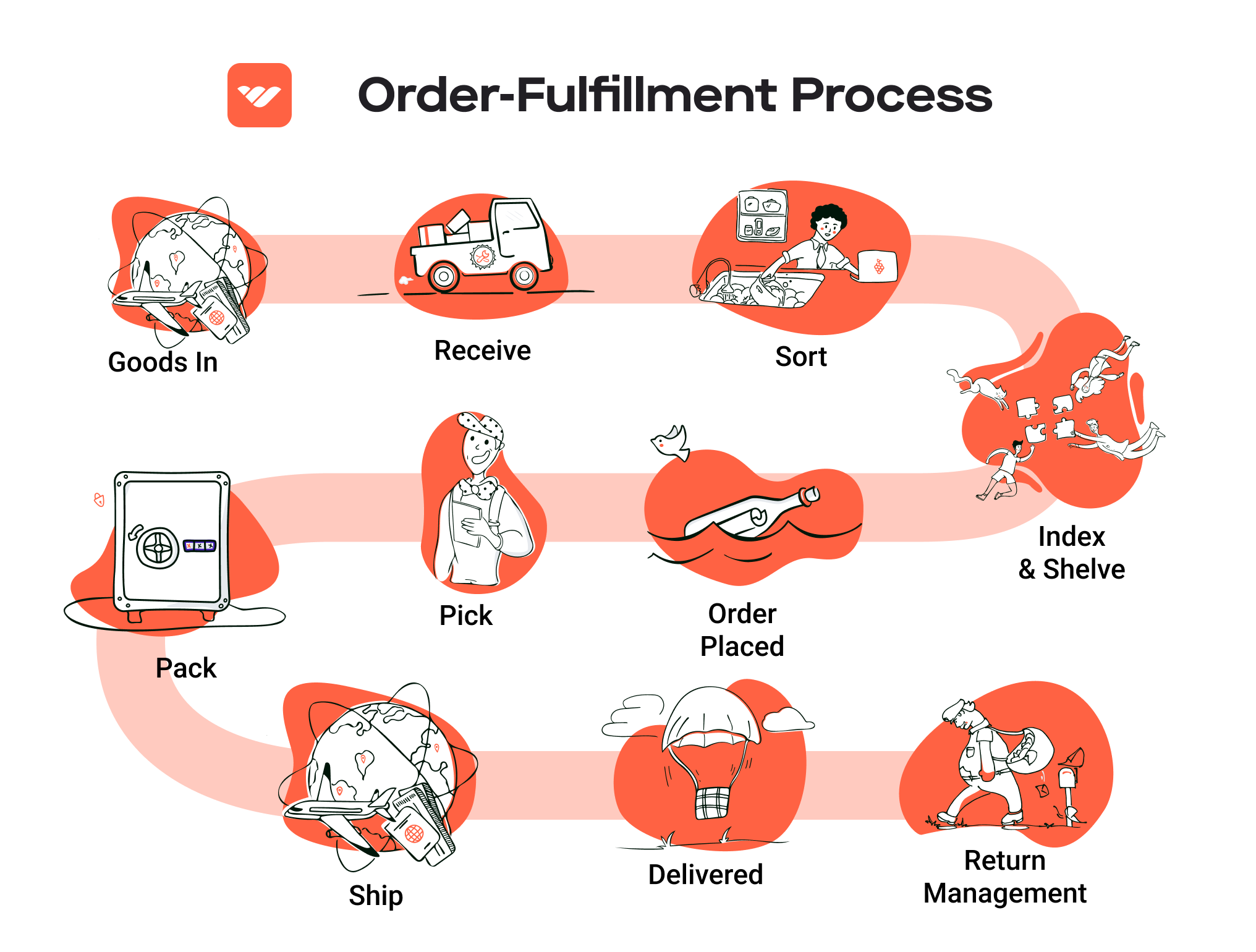
A Deep Dive into Amazon FBA: Pros, Cons, and Who It’s For
Understanding Fulfillment by Amazon (FBA)
Fulfillment by Amazon (FBA) is a service provided by Amazon that allows sellers to store their products in Amazon’s fulfillment centers. Amazon takes on the responsibility of storage, packaging, and shipping products to customers. This service not only streamlines logistics for sellers but also offers significant advantages through Amazon’s extensive distribution network.
How FBA Works
-
Inventory Storage: Sellers send their products to Amazon’s fulfillment centers. Once received, Amazon manages the inventory, ensuring it is stored efficiently across multiple warehouses.
-
Order Processing: When a customer places an order for a product listed by a seller, Amazon picks, packs, and ships the item on the seller’s behalf. This process is automated through Amazon’s sophisticated logistics system.
-
Shipping: Amazon handles all aspects of shipping, including providing tracking information and ensuring that packages arrive on time. Sellers can benefit from Amazon’s established carrier partnerships and shipping efficiencies.
-
Customer Service: Amazon also provides customer service for orders fulfilled through FBA, managing inquiries, returns, and refunds, which can save sellers considerable time and effort.
-
Returns Management: If a customer wishes to return a product, Amazon handles the return process, updating inventory levels automatically.
Pros of Using FBA
Prime Eligibility
One of the most significant benefits of FBA is that products become eligible for Amazon Prime. This opens up access to millions of Prime members who are more likely to purchase products with fast, free shipping. The Prime badge can significantly increase sales, as customers tend to trust products that are Prime eligible.
Customer Trust
Amazon is a trusted brand worldwide, and using FBA can enhance a seller’s credibility. Customers are more inclined to buy from sellers who utilize FBA because they associate the service with quality and reliability. The seamless buying experience provided by Amazon can lead to higher conversion rates.
Multi-Channel Fulfillment
FBA is not limited to Amazon’s marketplace. Sellers can leverage FBA for orders placed on their own websites or other platforms. This capability allows businesses to maintain a consistent fulfillment process across multiple sales channels, effectively streamlining operations.
Cons of Using FBA
High Fees
One of the most significant drawbacks of FBA is the cost associated with using the service. Sellers face various fees, including storage fees for inventory and fulfillment fees based on the size and weight of the products. These costs can add up quickly, especially for low-margin items or products that do not sell as quickly as anticipated.
Strict Inventory Rules
Amazon imposes strict guidelines on inventory management. Sellers must adhere to specific requirements regarding labeling, packaging, and product preparation. Failure to comply can result in additional fees or even the rejection of inventory. This can be particularly challenging for new sellers or those unfamiliar with Amazon’s policies.
Commingling Risks
FBA uses a commingled inventory system, meaning that a seller’s products are stored alongside those of other sellers. This can lead to potential issues, such as receiving returns that do not belong to the seller or selling products that may not meet the seller’s quality standards. While Amazon offers some protections, the risk of commingling can be a concern for brands focused on maintaining strict quality control.
Who is FBA Best For?
Fulfillment by Amazon is best suited for sellers who:
-
Have High Sales Volume: Businesses that can move a high volume of inventory can benefit from the efficiencies and reduced shipping costs offered by FBA.
-
Sell Low to Medium Margin Products: FBA can be particularly advantageous for sellers of low to medium-margin products, as the increased sales velocity and access to Prime members can offset the higher fees.
-
Desire to Focus on Growth: Entrepreneurs and businesses looking to scale quickly and efficiently may find FBA appealing, as it allows them to focus on marketing and product development rather than logistics.
-
Want to Tap into Amazon’s Customer Base: Sellers aiming to reach the vast Amazon customer base and leverage the trust associated with the platform will find FBA to be a valuable tool.
-
Need Multi-Channel Fulfillment: Those who sell across various channels and wish to streamline their fulfillment process will benefit from FBA’s ability to handle orders from multiple sources.
In conclusion, Fulfillment by Amazon offers a robust solution for e-commerce businesses looking to simplify their logistics and reach a wider audience. While there are costs and challenges associated with the service, the benefits of increased sales, customer trust, and operational efficiency often outweigh the drawbacks, making it a worthy consideration for many sellers.
Core Services Offered by Fulfillment Centers
Inventory Management & Warehousing
Effective inventory management and warehousing are foundational services provided by fulfillment centers that significantly impact an e-commerce business’s efficiency and profitability. This service encompasses the systematic tracking, storage, and organization of products within a warehouse environment.
What It Is:
Fulfillment centers employ sophisticated inventory management systems that utilize real-time data to monitor stock levels, track product movement, and forecast inventory needs. These systems often integrate with e-commerce platforms to provide seamless updates on inventory availability across various sales channels.
Benefits:
- Optimized Stock Levels: By maintaining accurate inventory counts and trends, businesses can avoid stockouts and overstock situations, which can lead to lost sales or increased holding costs.
- Space Efficiency: Fulfillment centers utilize warehouse space effectively, reducing the need for businesses to invest in their own warehousing infrastructure. This allows for scalability as businesses grow.
- Speed and Accuracy: With centralized storage, order fulfillment can be executed more quickly and accurately, enhancing the overall customer experience and boosting satisfaction rates.
Pick and Pack Services
Pick and pack services refer to the process of selecting items from inventory (picking) and preparing them for shipment (packing) based on customer orders.
What It Is:
When an order is placed, fulfillment center staff quickly locate the products within the warehouse. They then pack these items securely using appropriate materials, often utilizing unbranded packaging to maintain the seller’s brand identity.
Benefits:
- Efficiency: Fulfillment centers employ technology and experienced staff to streamline the pick and pack process, reducing the time from order placement to shipment. This is crucial for meeting customer expectations for fast delivery.
- Cost-Effective Labor: Outsourcing pick and pack services can lower labor costs for e-commerce businesses, as they don’t have to hire and manage in-house staff.
- Scalability: As order volumes fluctuate—especially during peak seasons—fulfillment centers can easily scale their pick and pack operations to accommodate changing demands without the need for additional resources from the business.
Kitting and Assembly
Kitting and assembly services involve combining multiple products or components into a single package or kit, which can be particularly beneficial for promotional offers or bundled products.
What It Is:
This service includes the assembly of various items into a pre-defined kit, labeling, and preparing these kits for distribution. For example, a beauty brand may offer a gift set that includes a lotion, a body wash, and a scrub, all packaged together.
Benefits:
- Enhanced Customer Appeal: Bundling products can create attractive offers for customers, encouraging higher average order values and increasing sales.
- Streamlined Operations: By outsourcing kitting and assembly to a fulfillment center, businesses can avoid the complexities and time-consuming processes associated with managing these tasks in-house.
- Inventory Control: Kitting allows businesses to manage inventory more effectively by grouping related products together, making it easier to forecast demand for bundled items.
Returns Management (Reverse Logistics)
Returns management, or reverse logistics, is the process of handling product returns efficiently and effectively.
What It Is:
Fulfillment centers manage the entire returns process, from receiving returned items to inspecting them and determining their next steps—whether restocking, refurbishing, or disposal.
Benefits:
- Customer Satisfaction: A well-managed return process enhances the customer experience by making returns simple and hassle-free, which can foster brand loyalty and repeat purchases.
- Cost Efficiency: By centralizing returns management, fulfillment centers can reduce the costs associated with processing returns, such as labor and logistics.
- Data Insights: Analyzing return data can provide valuable insights into product performance and customer preferences, helping businesses make informed decisions about inventory and product offerings.
Conclusion
Utilizing fulfillment centers for these core services allows e-commerce businesses to focus on their core competencies—such as marketing and product development—while ensuring that logistics are handled efficiently and effectively. This strategic partnership not only enhances operational efficiency but also positions businesses for scalable growth in an increasingly competitive market.
How to Choose a Fulfillment Partner: A 6-Point Checklist
Location & Warehouse Network
Importance:
The geographical location of a fulfillment partner’s warehouses is crucial for optimizing shipping times and costs. A well-distributed network can significantly reduce delivery times, enhance customer satisfaction, and lower shipping fees.
Questions to Ask:
– Where are your warehouses located, and how do they align with my target markets?
– Do you have multiple fulfillment centers to ensure faster delivery across regions?
– How do you manage inventory distribution across your network?
Technology & Integrations
Importance:
A fulfillment partner’s technology stack should seamlessly integrate with your existing e-commerce platforms. This ensures real-time inventory tracking, order processing, and data sharing, which are essential for efficient operations.
Questions to Ask:
– What technology do you use for inventory management and order processing?
– Can your system integrate with my e-commerce platform (e.g., Shopify, WooCommerce)?
– Do you provide real-time tracking for both my team and customers?
Specializations (e.g., Cold Storage, Oversized Items)
Importance:
Not all fulfillment partners handle every type of product. If your business deals with specialized items, such as perishable goods requiring cold storage or large, bulky items, it’s essential to choose a partner with the right capabilities.
Questions to Ask:
– What types of products do you specialize in handling?
– Do you have facilities for cold storage or handling hazardous materials?
– How do you manage oversized items or items that require special handling?
Scalability & Capacity
Importance:
As your business grows, your fulfillment needs will evolve. A partner that can scale operations with you is vital to accommodate increased order volumes and seasonal fluctuations without compromising service quality.
Questions to Ask:
– How do you handle seasonal spikes in demand?
– What is your capacity for scaling operations if my order volume increases?
– Do you have the infrastructure to support multi-channel fulfillment as my business expands?
Pricing and Contracts
Importance:
Understanding the cost structure of your fulfillment partner is essential for budgeting and financial forecasting. Look for transparent pricing with no hidden fees and flexible contracts that don’t lock you into unfavorable terms.
Questions to Ask:
– What is your pricing model (e.g., per order, per item, storage fees)?
– Are there any additional fees for services such as returns or special packaging?
– Can you provide a breakdown of all potential costs, including seasonal surcharges?
Customer Support & Reviews
Importance:
Effective customer support is critical for addressing issues promptly and maintaining operational efficiency. Additionally, researching reviews and testimonials provides insight into the partner’s reliability and service quality.
Questions to Ask:
– What kind of customer support do you offer (e.g., phone, email, chat)?
– How quickly can I expect a response to inquiries or issues?
– Can you provide references or case studies from current clients, particularly those in my industry?
Conclusion
Choosing the right fulfillment partner is a pivotal decision for your e-commerce business. Utilizing this checklist will help you evaluate potential partners effectively, ensuring they align with your operational needs and growth objectives. By asking the right questions and thoroughly assessing each area, you can select a fulfillment partner that not only meets your current requirements but also supports your future expansion.
Understanding Fulfillment Pricing: A Breakdown of Common Fees
Initial Setup Fees
When you start using a fulfillment service, you may encounter initial setup fees, which are one-time costs associated with getting your account up and running. These fees can vary depending on the provider and may include costs for account configuration, software integration, and onboarding assistance. For instance, some services might charge a flat fee, while others may base their charges on the complexity of your integration with existing platforms, such as e-commerce websites or marketplaces.
To avoid unexpected charges, it’s essential to clarify with your fulfillment partner what services are included in the setup fee and what additional costs may arise during the onboarding process. Always ask for a detailed breakdown of the setup costs to ensure transparency.
Receiving Fees
Receiving fees are charges incurred when your products are delivered to the fulfillment center. These fees cover the labor and resources needed to unload, inspect, and store your inventory. Typically calculated on a per-unit basis, these fees can vary based on the size and weight of the items. For example, heavier or bulkier items may incur higher receiving fees due to the additional handling required.
To mitigate receiving fees, it’s advisable to consolidate shipments to minimize the number of deliveries made to the fulfillment center. Additionally, ensure your products are well-packaged and labeled correctly to reduce handling time and potential errors during the receiving process.
Storage Fees (per pallet/bin)
Storage fees are charged for the space your inventory occupies within the fulfillment center. These fees are typically calculated on a monthly basis and can be based on the total cubic footage your products occupy. Providers may have different pricing tiers for standard-size and oversized products, with larger items generally incurring higher storage fees.
It’s important to monitor your inventory levels closely, especially during peak seasons when storage fees can increase significantly. For instance, many fulfillment centers apply seasonal rates, often raising storage costs during the holiday season due to increased demand. To manage storage costs effectively, consider implementing a robust inventory management strategy that includes regular audits and timely replenishment to minimize excess stock.
Pick & Pack Fees (per item/order)
Pick and pack fees are charged for the labor involved in selecting your products from the warehouse and packaging them for shipment. This fee is usually calculated on a per-item or per-order basis, depending on the fulfillment provider’s pricing structure. For instance, a provider may charge a flat rate for picking each item plus an additional fee for packing the order.
To optimize pick and pack costs, consider streamlining your product offerings and minimizing the variety of items in each order. This can reduce the time and labor involved in fulfilling each order, ultimately lowering your overall costs. Additionally, using standardized packaging can also help reduce packing time and costs.
Shipping Fees
Shipping fees are one of the most significant components of fulfillment pricing. These fees are determined by various factors, including the weight and dimensions of the package, the shipping method selected, and the destination. Fulfillment providers typically offer multiple shipping options, ranging from standard to expedited services, each with different pricing structures.
To calculate shipping fees accurately, you’ll need to consider not only the size and weight of your products but also the shipping zones and service levels. It’s beneficial to establish relationships with multiple carriers to compare rates and find the most cost-effective shipping solutions for your business. Additionally, you can leverage bulk shipping discounts by consolidating shipments whenever possible.
Tips for Getting an Accurate Quote
-
Clarify Your Needs: Before requesting quotes, clearly define your fulfillment requirements, including order volume, product types, and any special handling needs. This information will help providers give you accurate estimates.
-
Request Detailed Breakdowns: Ask for a detailed breakdown of all potential fees, including initial setup, receiving, storage, pick & pack, and shipping fees. Understanding each component will allow you to compare quotes more effectively.
-
Consider Seasonal Variations: Inquire about any seasonal pricing changes, especially during peak seasons like the holidays. This will help you avoid surprises when costs increase.
-
Evaluate Flexibility: Look for providers that offer flexible pricing models or discounts for long-term commitments. This can lead to significant savings over time.
-
Compare Multiple Providers: Don’t settle for the first quote you receive. Compare offers from multiple fulfillment providers to ensure you’re getting the best overall value for your needs.
By understanding these common fulfillment pricing models and asking the right questions, you can make informed decisions that enhance your operational efficiency and help scale your e-commerce business effectively.
Frequently Asked Questions (FAQs) about Fulfillment
1. What is Amazon Multi-Channel Fulfillment (MCF)?
Amazon Multi-Channel Fulfillment (MCF) is a service that allows e-commerce businesses to use Amazon’s extensive fulfillment network to ship orders placed outside the Amazon marketplace. This means you can sell on your own website or other platforms like Shopify and eBay while leveraging Amazon’s logistics for storage, packing, and shipping.
2. How does MCF pricing work?
MCF pricing is based on a tiered structure that considers the size and weight of your products. Fees include fulfillment charges per unit, storage fees based on the cubic feet your inventory occupies, and additional costs for special services like returns or labeling. For example, standard delivery for small items can start at around $6.99, while larger items have varying costs based on weight.
3. What are the benefits of using Amazon MCF?
Using Amazon MCF offers several advantages:
– Scalability: Easily scale your fulfillment as your business grows.
– Cost Efficiency: Avoid referral fees associated with marketplace sales.
– Professional Delivery: Customers receive a seamless, unbranded delivery experience.
– Global Reach: Fulfillment is available in multiple countries, expanding your market potential.
4. How much do fulfillment services typically cost?
Fulfillment service costs vary widely based on the provider and specific needs. Amazon MCF fees include fulfillment costs, storage fees, and any additional service fees. As a reference, MCF fulfillment fees can range from approximately $6.99 for small items to over $241.88 for oversized products, depending on weight and size.
5. What is the difference between a warehouse and a fulfillment center?
A warehouse is primarily a storage facility for goods, whereas a fulfillment center specializes in the process of receiving, processing, and delivering orders directly to customers. Fulfillment centers often provide additional services such as inventory management, packing, and shipping, making them ideal for e-commerce businesses.
6. What is a 3PL (Third-Party Logistics)?
A 3PL is a service provider that manages logistics and fulfillment operations on behalf of businesses. This can include warehousing, inventory management, order processing, and shipping. Unlike Amazon MCF, which is specifically tied to Amazon’s network, 3PLs may offer a broader range of services across various platforms.
7. Are there any hidden costs associated with MCF?
Yes, there can be additional costs that may not be immediately apparent. These include fees for inventory removal, labeling, and handling returns. Moreover, storage fees can increase significantly during peak seasons (e.g., Q4), so it’s important to plan your inventory strategy accordingly.
8. How can I estimate my MCF costs effectively?
To estimate your MCF costs, consider using Amazon’s MCF Fee Calculator or similar tools that allow you to input your product dimensions and weights. This will help you understand potential fulfillment and storage fees based on your specific product mix and sales volume.
9. What are peak season surcharges in MCF?
Peak season surcharges are additional fees applied during high-demand periods, typically from October 15 to January 14. These surcharges can increase fulfillment costs by $0.35 to $1.00 per unit, depending on the size category of the items being shipped. It’s critical to account for these fees in your pricing strategy during the holiday season.
10. How can I optimize my fulfillment strategy using MCF?
To optimize your fulfillment strategy with MCF, consider the following approaches:
– Inventory Management: Send inventory early, ideally by October 1, to avoid delays.
– Cost Analysis: Regularly analyze your fulfillment costs and adjust your pricing to maintain profitability.
– Hybrid Solutions: Use MCF for speed-critical orders while considering 3PLs for cost-sensitive shipments, especially during peak seasons.
By strategically managing your fulfillment channels, you can enhance efficiency and customer satisfaction.
Conclusion: Is Outsourcing Fulfillment the Right Move for Your Business?
Evaluating the Benefits of Outsourcing Fulfillment
Outsourcing your fulfillment needs can significantly enhance your e-commerce operations, providing key advantages that are crucial for scaling your business. One of the primary benefits is time savings. By delegating fulfillment tasks to a specialized partner, you can focus on core business activities, such as marketing and product development, rather than getting bogged down in logistics.
Scalability is another compelling reason to consider outsourcing. As your sales volume fluctuates, a fulfillment partner can easily adapt to your needs without the hassle of managing additional staff or infrastructure. This flexibility is particularly beneficial during peak seasons, such as the holiday rush, where demand can surge unexpectedly.
Furthermore, leveraging the expertise of a fulfillment service can enhance your operational efficiency. These providers have established systems, technology, and best practices that streamline the order processing and shipping experience. For example, utilizing Amazon’s Multi-Channel Fulfillment (MCF) allows you to tap into a robust logistics network that can optimize delivery times and reduce costs, all while maintaining your brand identity.
However, the choice of a fulfillment partner is critical for your growth trajectory. It’s essential to assess potential partners based on their capabilities, pricing structures, and the level of service they offer. A thorough evaluation ensures that you align with a partner who can support your specific business objectives and customer expectations.
Call to Action
To determine if outsourcing fulfillment is the right next step for your business, conduct a comprehensive audit of your current shipping process. Analyze your costs, efficiency, and customer satisfaction levels. This assessment will provide insights that can guide your decision-making and position your business for sustainable growth. Don’t hesitate to explore fulfillment options that can enhance your operational capabilities and free you to focus on what matters most—growing your business.
Important Disclaimer
⚠️ Important Disclaimer
The information in this guide is for educational purposes. Fulfillment services, pricing, and platform features change frequently. Always conduct your own due diligence and consult with providers directly before making business decisions.
